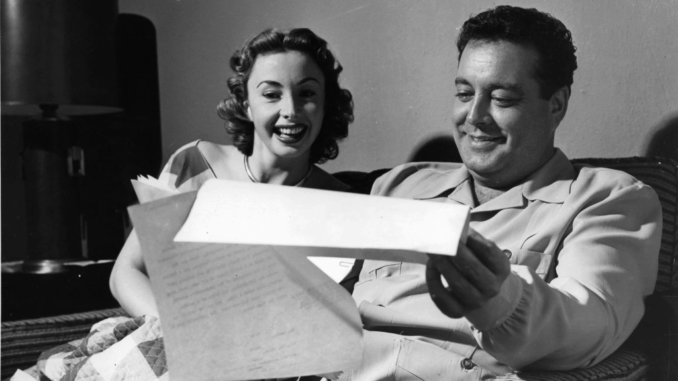
For all the laughter and catchphrases of The Honeymooners, the stories behind the curtain were just as compelling. From backstage tensions to lighthearted anecdotes, the production of the show left behind a trail of fascinating tales.
One of the most striking behind-the-scenes glimpses came from LIFE magazine’s famous “Great Train Ride” photo essay with Jackie Gleason. The images captured the star in his element — surrounded by fans, dancers, and fellow performers. They revealed the scale of Gleason’s influence, not just as Ralph Kramden but as an entertainment powerhouse whose variety shows and specials were national events.
The presence of the June Taylor Dancers also added glamour to Gleason’s productions. June Taylor, a pioneering choreographer, created intricate routines that often opened Gleason’s variety shows. Though they were not part of the sitcom itself, their connection to The Honeymooners world demonstrated Gleason’s desire to merge comedy with showmanship.

There were also stories about the pressures of live television. Gleason was famous for his catchphrase “And away we go!” but behind the scenes, his temper could flare if he felt a performance was slipping. Scripts were sometimes rewritten hours before taping, and the cast had to adapt quickly. Audrey Meadows, ever professional, reportedly kept meticulous notes to keep up with constant changes.
Art Carney, meanwhile, developed his own quirks off-camera. Known for his improvisation, he sometimes added small gestures or lines during rehearsals that Gleason decided to keep. This spontaneity enriched the final episodes, giving Norton his lovable, unpredictable charm.
Joyce Randolph, the least experienced of the main cast, once admitted that she never fully expected to be remembered for the role of Trixie. Yet fans would stop her for decades, recalling favorite episodes. Her experience underscores how even supporting roles can achieve iconic status when paired with the right ensemble.
Even technical aspects became part of the lore. Crew members recalled how the Electronicam system required near-flawless timing. Any mistake meant wasted film stock and frustrated producers. Yet this pressure also brought out the best in the cast, who often delivered performances in single takes.
These hidden stories remind us that The Honeymooners was not created in a vacuum. It was the result of meticulous planning, last-minute chaos, and an ensemble cast committed to their craft. For a show about the struggles and small victories of everyday life, its backstage world was filled with challenges that mirrored — in their own way — the very comedy it delivered to millions of viewers.
